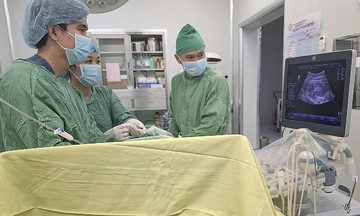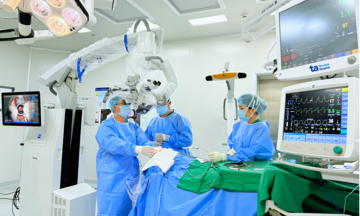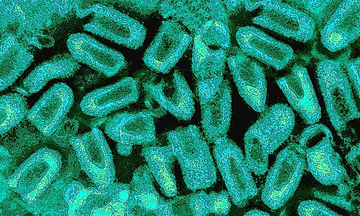People with long-term or poorly controlled diabetes are at risk of vision complications, including blindness. Here are some of the main eye diseases that often affect people with type 1 and 2 diabetes.
Diabetic retinopathy
The retina is the inner lining at the back of the eye. Its function is to sense light and convert it into signals that the brain can interpret. In healthy individuals, blood vessels in the eye deliver blood to the retina to maintain optimal function. In people with diabetes, these blood vessels can weaken, bulge, or leak, damaging the retina and leading to diabetic retinopathy.
Symptoms: The early stages of diabetic retinopathy sometimes have no serious symptoms. Some people notice vision changes such as difficulty seeing far away or reading, but these often appear and disappear.
How to protect your eyes: Have regular eye exams and talk to an ophthalmologist if your vision suddenly changes or becomes blurred. Treatment for diabetic retinopathy usually focuses on slowing or stopping the progression of the disease to preserve remaining vision.
Diabetic macular edema
The macula is the part of the retina located at the back of the eye. It is responsible for central vision, helping to distinguish colors and gather the small details that the eye sees. In diabetes, the blood vessels in the retina can leak fluid into the macula, leading to swelling.
Symptoms: Blurred vision, seeing dark spots, or strands floating in your vision, and faded colors are signs of diabetic macular edema. However, some people do not experience any symptoms.
How to protect your eyes: Diabetic macular edema treated in its early stages can be reversed. The best way to prevent this condition is to have regular eye exams. If diabetic macular edema progresses and becomes chronic, it can cause permanent damage to the retina.
Corticosteroid treatments, in the form of eye drops, pills, or injections, can also reduce eye swelling.
Glaucoma
High blood sugar can cause serious damage to the blood vessels of the retina, causing new blood vessels to form. These new blood vessels develop on the retina or iris, increasing eye pressure, leading to glaucoma.
Symptoms: The signs of glaucoma are varied, including patchy blind spots in central or peripheral vision. If the disease progresses, patients may lose peripheral vision. Some cases experience gradual vision loss over time, while others may see colored halos around their vision. Glaucoma can also manifest as red eyes, eye pain, severe headaches, nausea, and vomiting.
How to protect your eyes: Regular eye exams are especially important for screening. This helps detect the disease at its earliest stage. If symptoms are present, an ophthalmologist can develop a plan to prevent more severe symptoms.
Prescription eye drops can help reduce eye pressure. Oral medications, surgery, and tube placement in the eye to drain fluid are alternative treatments if eye drops are not effective.
Cataracts
Cataracts occur when the normally clear lens of the eye becomes cloudy, making it harder for the eye to focus. Diabetes increases the risk of cataracts. People with diabetes are more likely to develop cataracts at an earlier age due to high blood sugar, which causes protein buildup in the lens of the eye.
Symptoms: When it first begins to form, a cataract may only affect a small part of the lens. But as it grows, it will obscure more of your vision and distort the light passing through. Patients may begin to notice blurred vision, faded or yellowed colors, sensitivity to light, and halos around lights.
How to protect your eyes: Cataracts are diagnosed through an eye exam, so people with diabetes should have their eyes checked annually.
Prescription glasses can correct vision problems related to cataracts. However, when patients do not respond to this method, cataract surgery may be considered to restore vision.
Bao Bao (Prevention)












